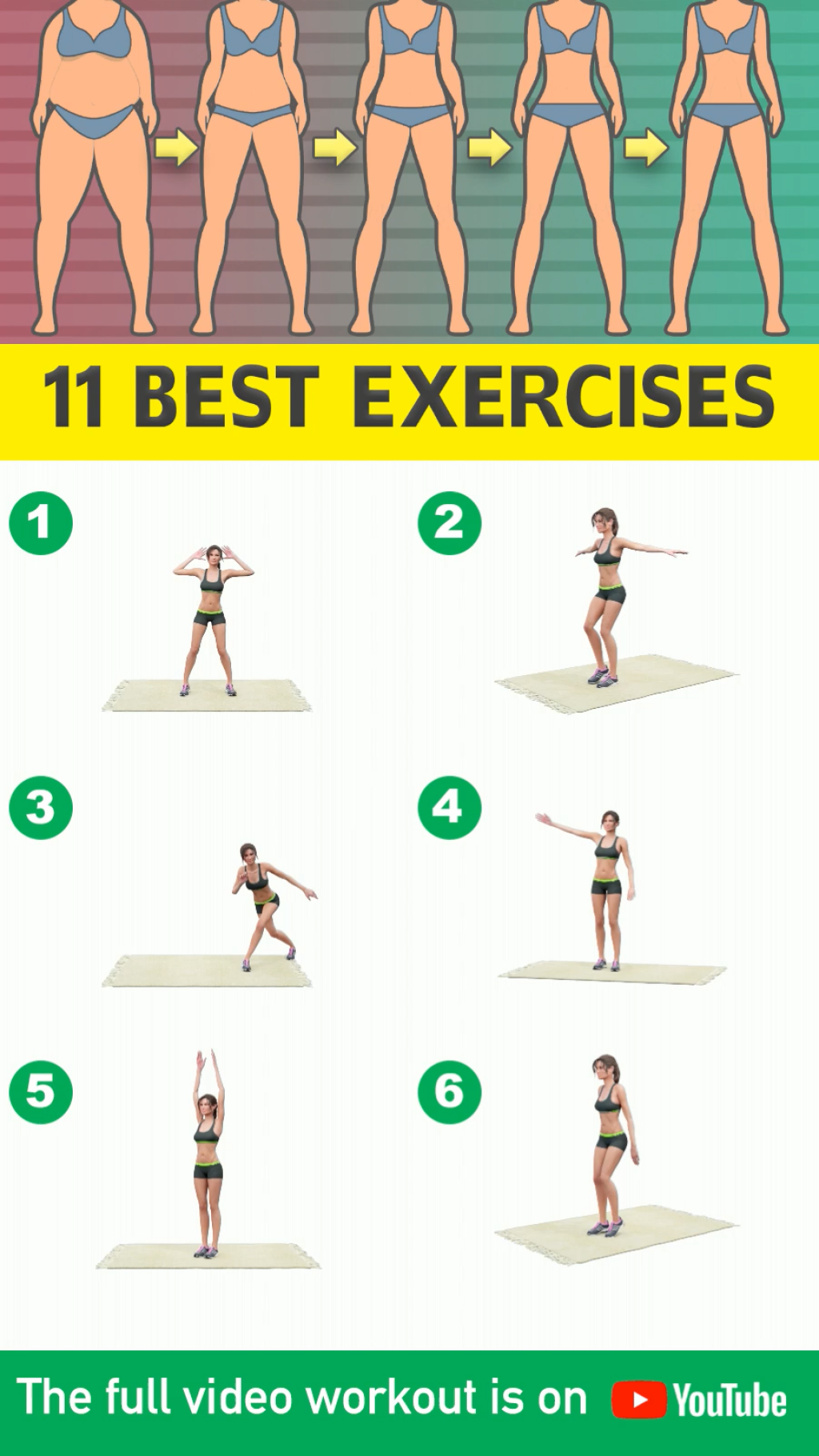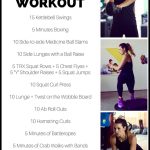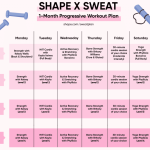Jump-Free Workout Routine: Boost Your Fitness With Effective Exercises!
Workout Routine No Jumping: Effective and Low-Impact Exercises for Fitness
Introduction
Hello Readers,
1 Picture Gallery: Jump-Free Workout Routine: Boost Your Fitness With Effective Exercises!

Welcome to our guide on workout routines that do not involve jumping. Whether you have joint issues, live in an apartment with downstairs neighbors, or simply prefer low-impact exercises, this article is designed to help you achieve your fitness goals without putting excessive stress on your joints. In this comprehensive guide, we will provide you with all the information you need to know about workout routines that exclude jumping, including the benefits, the exercises involved, and how to incorporate them into your fitness regimen. So let’s jump right in (pun intended)!
What is a Workout Routine No Jumping?

Image Source: pinimg.com
When we talk about a workout routine that excludes jumping, we are referring to a set of exercises that are designed to provide a full-body workout without involving any high-impact movements, such as jumping jacks or burpees. These routines focus on low-impact exercises that are gentle on your joints while still challenging your muscles and improving your cardiovascular endurance. By eliminating jumping movements, these workout routines are suitable for individuals of all fitness levels and can be especially beneficial for those recovering from injuries or dealing with joint pain.
Who Can Benefit from a Workout Routine No Jumping?
A workout routine that excludes jumping can benefit a wide range of individuals, including:
People with joint issues or injuries: If you have knee, ankle, or hip problems, or are recovering from an injury, a low-impact workout routine can help you stay active without exacerbating your condition.
Individuals living in apartments or with downstairs neighbors: High-impact exercises can be noisy and disruptive to those living below you. By opting for a routine that doesn’t involve jumping, you can maintain your fitness goals without disturbing your neighbors.
Seniors or individuals with reduced mobility: As we age, our joints become more susceptible to injuries. A workout routine that avoids jumping allows older adults or those with limited mobility to engage in exercise safely and comfortably.
Beginners: If you’re new to fitness or have been inactive for a while, starting with a workout routine that excludes jumping can help you ease into exercise and gradually build strength and endurance.
When Should You Incorporate a Workout Routine No Jumping?
A workout routine that excludes jumping can be incorporated into your fitness regimen at any time. Whether you’re looking to diversify your existing routine or starting fresh, these exercises can be done as part of your regular workout schedule. You can choose to dedicate specific days to low-impact workouts or alternate between high- and low-impact exercises throughout the week. The key is to find a balance that works for you and allows your body adequate time to recover.
Where Can You Do a Workout Routine No Jumping?
One of the advantages of a workout routine that excludes jumping is its versatility. These exercises can be performed in the comfort of your own home, at the gym, or even outdoors. All you need is a small space, a mat or padded surface, and some basic equipment such as resistance bands or dumbbells. This flexibility allows you to stay consistent with your workouts regardless of your location.
Why Should You Consider a Workout Routine No Jumping?
There are several reasons why you may want to consider incorporating a workout routine that excludes jumping into your fitness routine:
Joint protection: By avoiding high-impact movements, you reduce the risk of joint injuries and minimize stress on your joints.
Accessibility: These routines are suitable for individuals of all fitness levels and can be modified to accommodate specific needs or limitations.
Variety: Adding low-impact exercises to your routine adds variety and prevents boredom, helping you stay motivated and committed to your fitness goals.
Weight management: Low-impact exercises can still burn calories and contribute to weight loss or maintenance, making them an effective tool for managing your weight.
How to Perform a Workout Routine No Jumping?
Performing a workout routine that excludes jumping involves a combination of strength training, cardiovascular exercises, and flexibility work. Here are some exercises you can include in your routine:
Plank: Start in a push-up position, resting on your forearms instead of your hands. Hold this position for a specific amount of time to engage your core muscles.
Glute Bridge: Lie on your back with your knees bent and feet flat on the ground. Lift your hips off the ground while squeezing your glutes, then lower them back down.
Lunges: Stand with your feet hip-width apart. Step one foot forward and lower your hips until both knees are bent at a 90-degree angle. Push through your front heel to return to the starting position.
Step-Ups: Using a step or sturdy platform, step one foot onto the elevated surface and push through your heel to lift your body up. Step back down and repeat with the opposite leg.
Seated Leg Press: If you have access to a leg press machine, adjust the seat to a comfortable position. Push the platform away from you using your legs, then return to the starting position with control.
Resistance Band Exercises: Utilize resistance bands to perform exercises such as bicep curls, tricep extensions, or lateral raises to target various muscles.
Yoga or Pilates: Incorporating yoga or Pilates into your routine can help improve flexibility, balance, and core strength.
Advantages and Disadvantages of a Workout Routine No Jumping
As with any fitness routine, there are advantages and disadvantages to consider before committing to a workout routine that excludes jumping. Let’s explore these:
Advantages
Low injury risk: By eliminating high-impact movements, the risk of joint injuries is significantly reduced.
Accessible to all fitness levels: Whether you’re a beginner or an experienced athlete, a workout routine that excludes jumping can be tailored to suit your needs and abilities.
Gentle on the joints: If you have joint pain or conditions such as arthritis, a low-impact routine can allow you to exercise without exacerbating your symptoms.
Full-body workout: These exercises engage multiple muscle groups, providing a comprehensive workout for your entire body.
Improved cardiovascular endurance: While low-impact, these exercises still elevate your heart rate and help improve your cardiovascular fitness.
Disadvantages
Less intense: If you enjoy high-intensity workouts or are looking to maximize calorie burn, a workout routine that excludes jumping may not provide the level of intensity you desire.
Reduced bone density benefits: High-impact exercises, such as jumping, are known to help improve bone density. If this is a concern for you, consult with a healthcare professional before committing to a low-impact routine.
Frequently Asked Questions (FAQs)
Here are some common questions about workout routines that exclude jumping:
Q1: Can I still achieve weight loss and muscle tone with a workout routine that excludes jumping?
A1: Absolutely! While low-impact exercises may not burn calories as quickly as high-impact exercises, they can still contribute to weight loss and muscle toning when combined with a balanced diet and consistency in your workouts.
Q2: Are there any modifications I can make to increase the intensity of a low-impact routine?
A2: Yes! You can increase the intensity of a low-impact routine by incorporating resistance bands, increasing the weight or resistance used, or reducing rest time between exercises.
Q3: Can I do a workout routine that excludes jumping if I have osteoporosis?
A3: If you have osteoporosis or any other medical condition, it is crucial to consult with your healthcare provider before starting any exercise routine. They can provide guidance on exercises that are safe and appropriate for your condition.
Q4: Can I combine high-impact and low-impact exercises in my fitness routine?
A4: Yes, you can create a balanced routine by alternating between high-impact and low-impact exercises. This allows you to challenge your body while still giving your joints a break.
Q5: Are there any specific warm-up or cool-down exercises I should incorporate into my workout routine?
A5: Yes, it is essential to warm up your muscles and joints before starting any exercise routine. Dynamic stretches and light cardio exercises, such as brisk walking or cycling, can help prepare your body for the workout. Cooling down with static stretches and deep breathing exercises can aid in recovery and prevent muscle soreness.
Conclusion
Friends, I hope this guide has shed light on the benefits and considerations of incorporating a workout routine that excludes jumping into your fitness regimen. Whether you have joint issues, prefer low-impact exercises, or live in a noise-sensitive environment, these routines can help you achieve your fitness goals while prioritizing your joint health. Remember to listen to your body, make modifications as needed, and always consult with a healthcare professional if you have any concerns. So lace up your sneakers, grab your resistance bands, and get ready to embark on a low-impact fitness journey that will keep you active, healthy, and injury-free.
Final Remarks
Disclaimer: The information provided in this article is for informational purposes only and should not be considered as medical or professional advice. Consult with a healthcare professional or fitness expert before starting any new exercise routine, especially if you have pre-existing medical conditions or injuries. Engaging in physical activity carries inherent risks, and it is essential to listen to your body and make informed decisions about your fitness journey. The author and publisher of this article are not responsible for any injuries or damages that may occur as a result of following the suggestions outlined herein.
This post topic: Workout Routines



